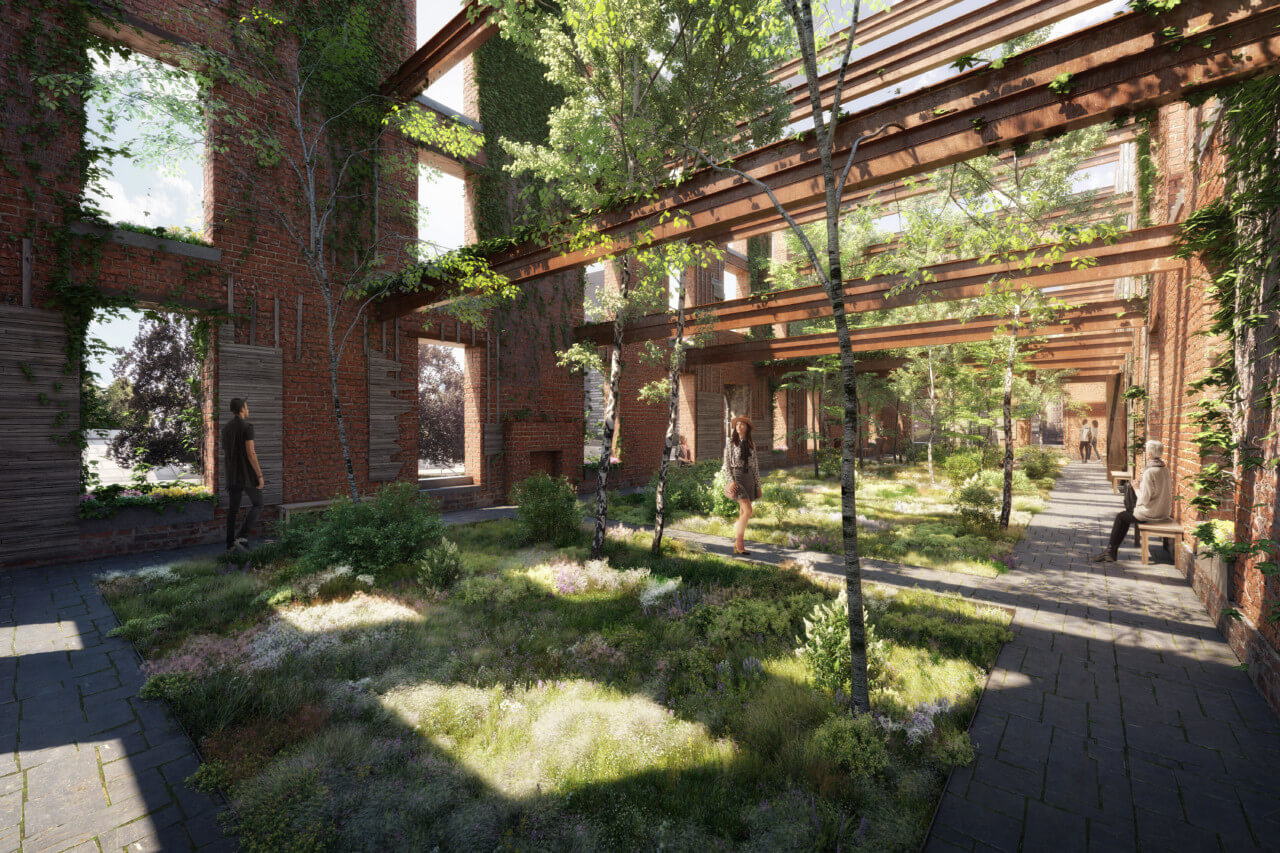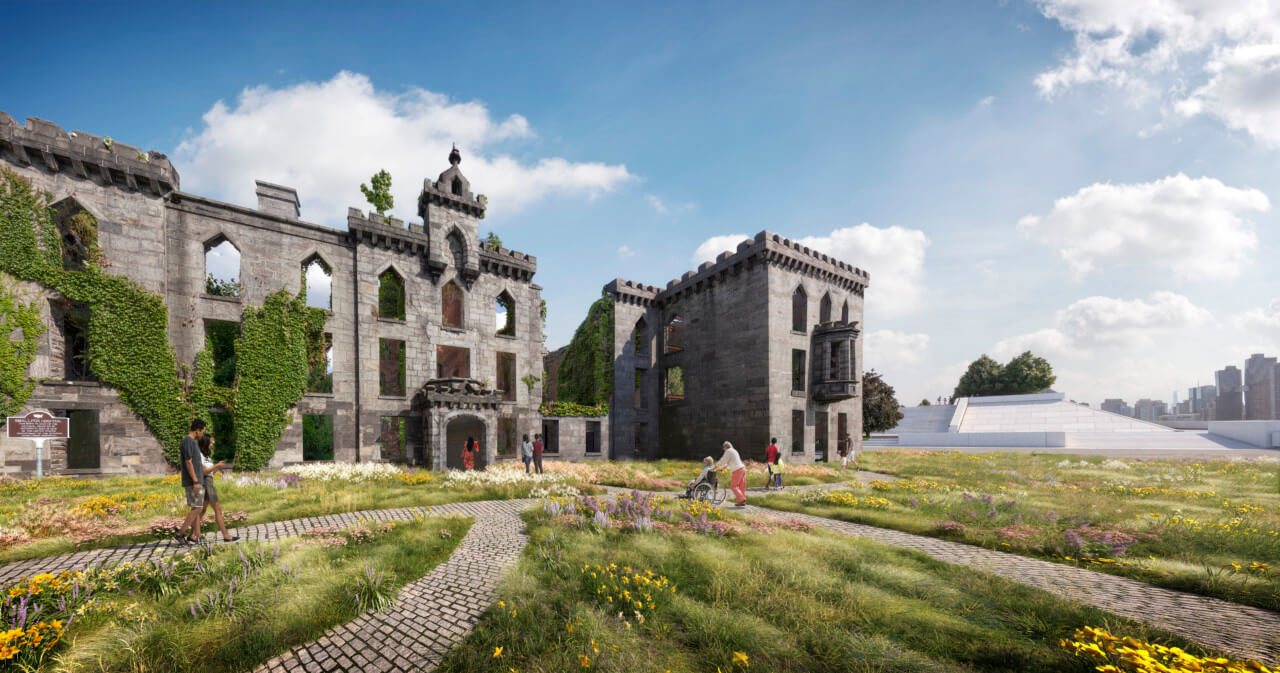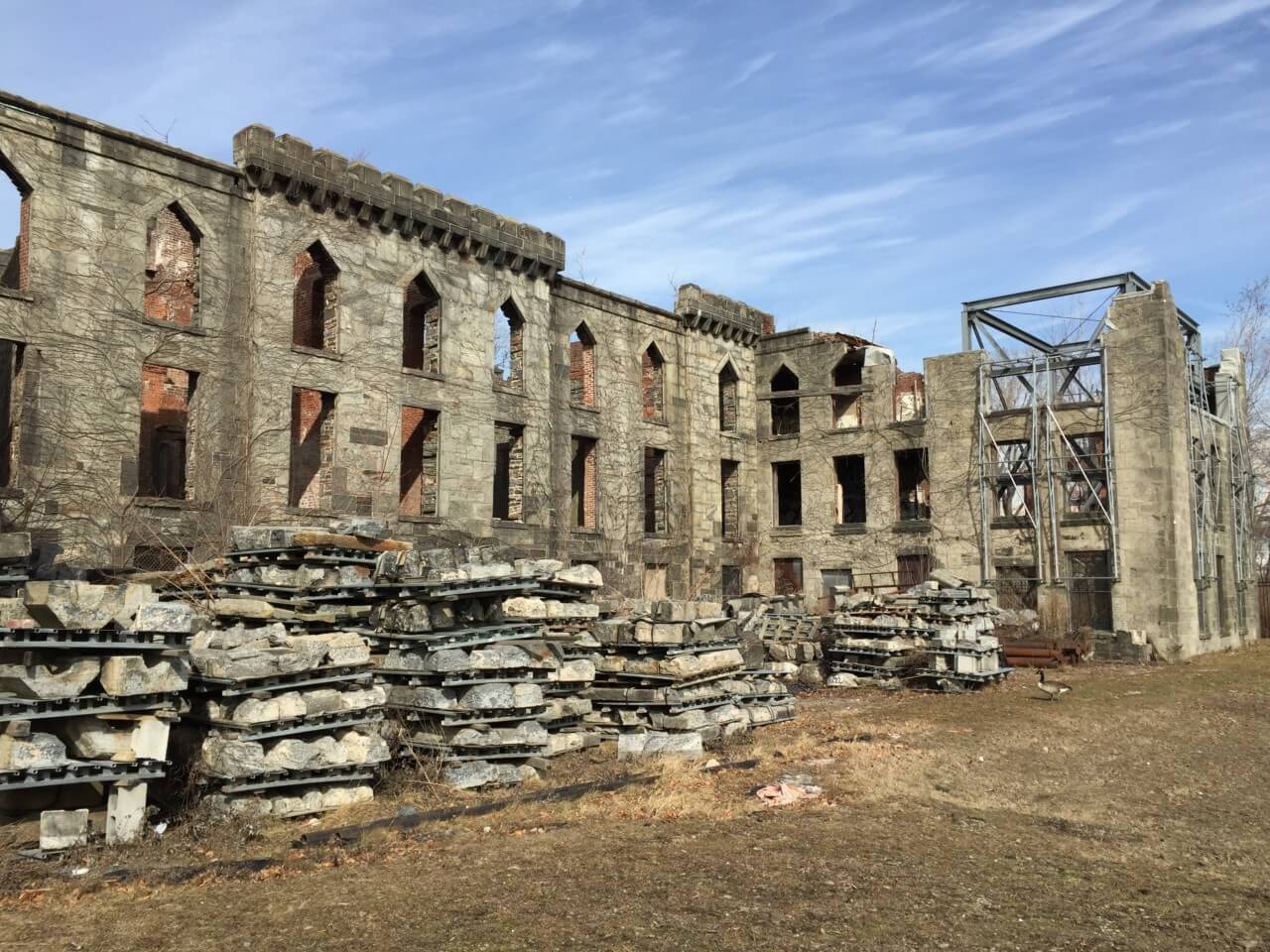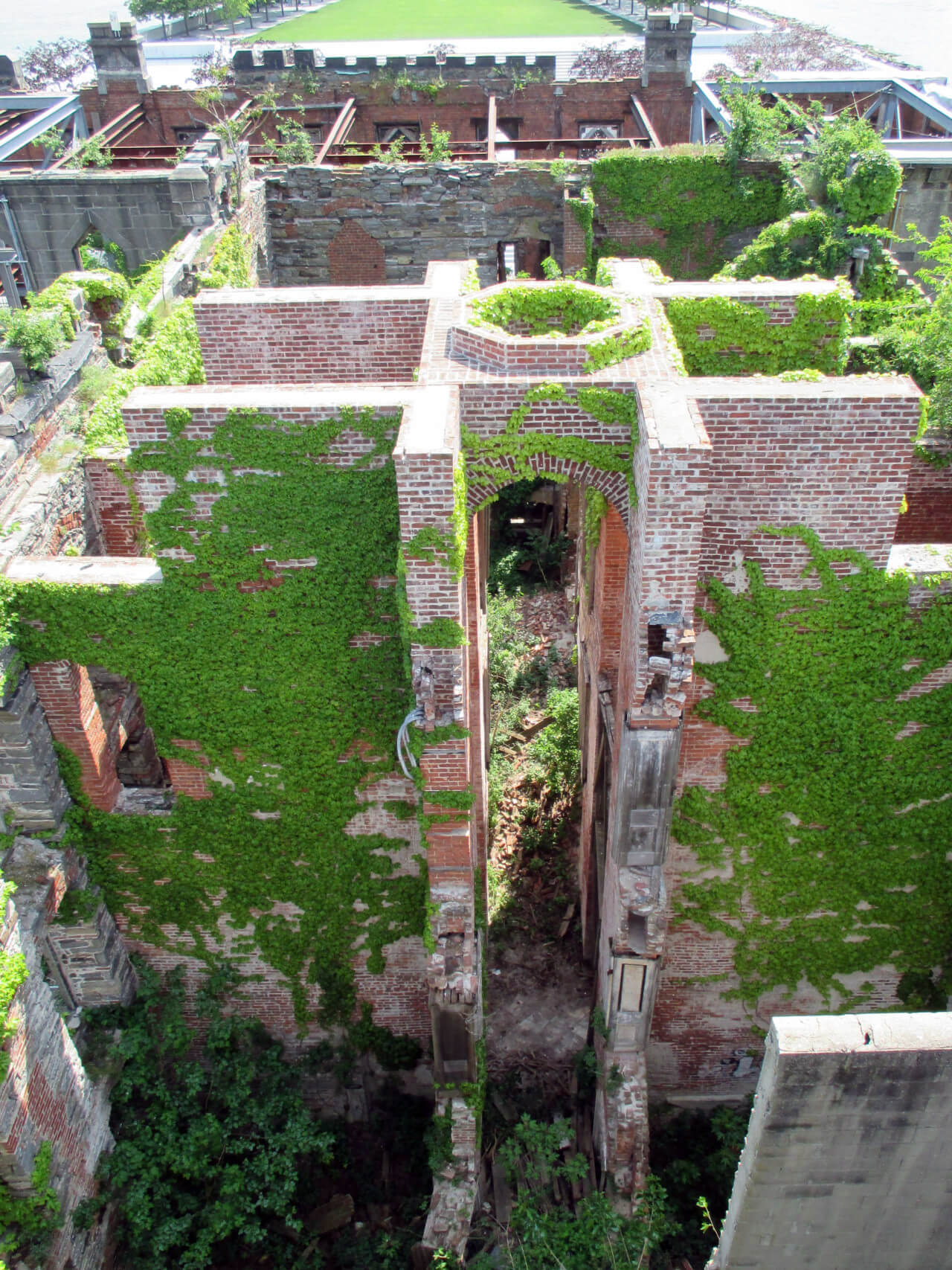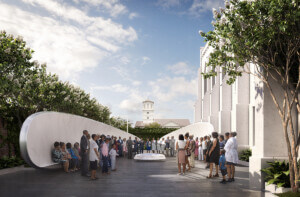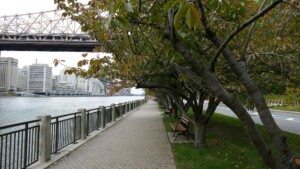Though several efforts have been made to install a permanent memorial to essential workers in New York City since the start of the pandemic in March 2020, nonprofit organization Friends of the Ruin’s proposal to stabilize and adaptively repurpose the ruins of the Smallpox Hospital on Roosevelt Island may be the most promising yet. Intended to honor medical professionals and frontline workers fighting viral and infectious diseases, the envisioned memorial would lend new significance to a site of already considerable cultural importance.
Before it was dilapidated, the building that formerly stood on the site of the proposed memorial played an important role in the public health of the city. Situated north of Four Freedoms State Park on the southern tip of Roosevelt Island, the structure was designed in the Gothic Revival style by James Renwick Jr., the well-known architect of St. Patrick’s Cathedral in Midtown Manhattan. When it opened in 1856, the hospital served as the first dedicated to the smallpox epidemic. After three decades of use, the hospital closed, and two new wings were constructed before the building reopened as a nursing school.
In the 1950s, the school was abandoned. The structure has since been actively deteriorating; roofs, stairwells, and the entire north wall have collapsed, and vegetation has crept its way up and into the structure, further destabilizing it. Identifying elements of the building that have endured include the crenellation along the roofline and parapets, the cupola and stone porch, and the pointed arches framing apertures. The building was eventually granted landmark status at the city, state, and national level, becoming the country’s first “landmark ruin.”
Friends of the Ruin was established in 2018 with the objective of stabilizing the remaining structure and turning the grounds into a publicly accessible park, but the COVID-19 pandemic cast the landmark’s significance in a new light. Given its former function as a hospital and nursing school, the adaptation of the site into a memorial to healthcare professionals seemed particularly fitting. Now, the necessity for such a memorial has only acquired greater urgency; though a semblance of normalcy has returned to daily life in the city, New Yorkers have yet to experience a meaningful space in which to grieve the dead.
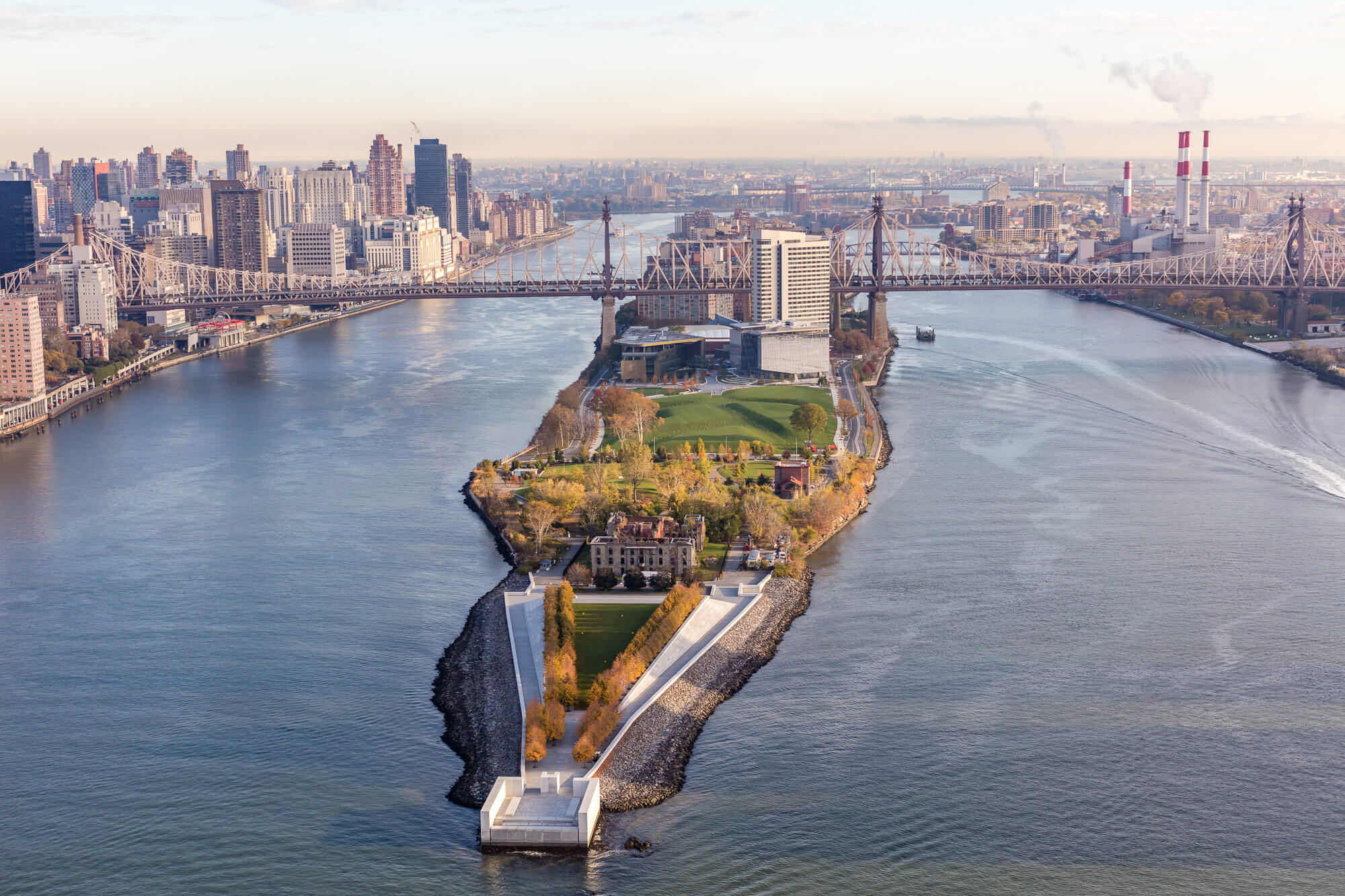
To date, Friends of the Ruin has raised an estimated $1.2 million through private and public support. The organization is also working with local firm Walter B. Melvin Architects to prepare stabilization drawings which detail, amongst other needs, where steel columns will be inserted and where walls will be reinforced. The preservation team intends to use the stones salvaged from the collapsed portions of the building in the reinforcement. The majority of the interior walls will be demolished, and the accumulated debris will be removed, leaving behind a stabilized building shell and a sunlit interior open to the sky above. Though still in the fundraising process, Friends of the Ruin intend to hold an international competition for the design of the memorial, which when complete will be free to the public and accessible year-round.
Throughout the decision-making process, the organization has sought to engage members of the community, elected officials, and advocacy organizations in the envisioning of the memorial. In March 2021, unanimous support was obtained from Manhattan’s Community Board 8. To better contextualize Friends of the Ruin’s approach, one need only recall the comparatively different one taken by former Governor Andrew Cuomo last summer, when plans were announced to build the “Circle of Heroes” monument to essential workers in Battery Park City. Within five days of having released the renderings, bulldozers were sent to Rockefeller Park, where the monument was slated for construction. Residents responded by protesting, decrying the lack of transparency in the decision-making process and the monument’s proposed design, which involved paving over valuable greenspace and installing 19 maple trees and an “eternal flame.” Following the pushback, plans to install the memorial in Battery Park City were halted indefinitely.
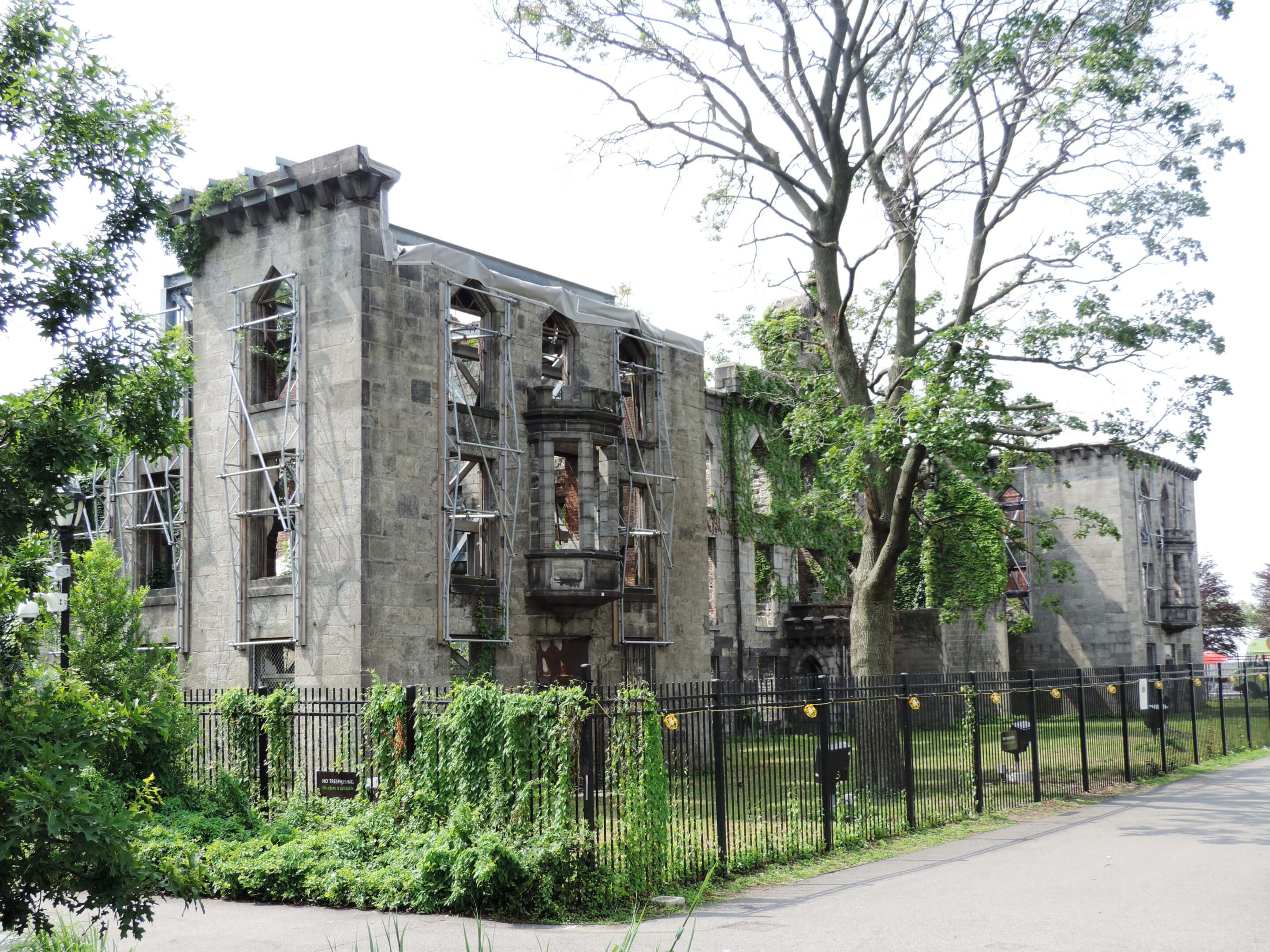
Scattered, more successful past efforts to realize a COVID-19 memorial in New York City have largely been temporary or relatively smaller in scope, including a statue installed in Lower Manhattan in honor of sanitation workers, a commemorative painting in the Brooklyn office of the Metropolitan Transportation Authority’s largest union, and a memorial service held on the one-year anniversary of the city’s first documented COVID-19 death, during which faces of New Yorkers who died of the virus were projected onto the Brooklyn Bridge.
Friends of the Ruin’s proposed memorial, dedicated more broadly to all frontline scientists and medical professionals who have fought viral and infectious diseases, is both all-encompassing and unique to this moment, when the Covid-19 Pandemic appears to have reached a turning point. Given the scope of the ambition and the historical significance of the site, it seems the ultimate design for the memorial will have to negotiate a fine line between inclusivity and specificity, serving to both educate the public on medical advances across generations and provide a meaningful space for mourning and reflection, particularly for those visitors who have lived through this pandemic and have perhaps lost someone during it.






